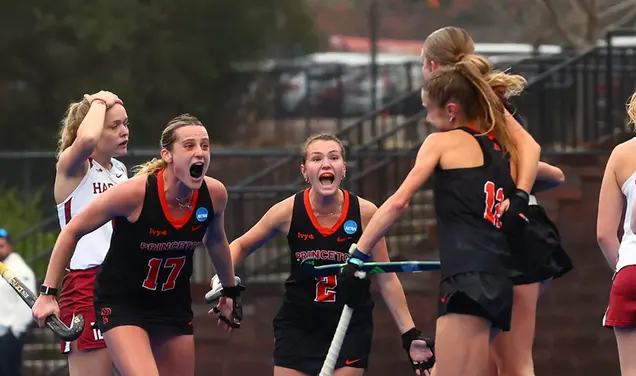Grading, Unbound
Faculty vote reverses 10-year policy setting targets for limiting A-grades
It’s official: On Oct. 6, the Princeton faculty overwhelmingly voted to end the 10-year-old grading policy that set numerical targets for A-grades.
Instead, beginning with the current term, students will be graded according to “well-defined and meaningful standards” set by each individual department. Dean of the College Valerie Smith said her office is working with departmental representatives and hopes to have all standards in place by the spring semester.
Ending the targets — an attempt to reverse the national trend of grade inflation — was recommended by an ad hoc faculty committee created by President Eisgruber ’83 last fall.
A handful of faculty members voted against changing the grading policy, including molecular biology professor Elizabeth Gavis, who said she voted against it because no clear-cut strategy to control grade inflation and minimize grading disparities between departments had been presented.
Several faculty members voiced concern that the end of University-wide numerical grading targets could cause some students to choose majors and classes in departments that are more lenient with grading.
“What I would like to see is our students falling in love with a question or a field, as opposed to going for the most optimal grading benefit,” said ecology and evolutionary biology professor Lars Hedin.
However, Smith said she doesn’t anticipate that students picking majors based on grading will become a problem.
“Numerous factors drive a student’s choice of major,” Smith said after the meeting. “Some students stick with what they said they wanted to do when they came to Princeton; some students discover their intended field is not for them; and some students have personal epiphanies — a seminar or general education course that changes their perspective and sets them on a new path. The key is for students to choose work that engages their imagination and expands their intellectual horizons.”
Each fall, the faculty Committee on Examinations and Standing will review grading results and report its findings to the faculty.
Engineering professor Clarence Rowley ’95, who chaired the ad hoc committee, said he expects that grade-point averages will rise a bit, but he doesn’t expect grade inflation to be as dramatic as in the past. Between 1974 and 2003, A-grades at Princeton increased from 30 percent to 48 percent.
“If over time we were to see departments or programs whose grading patterns were notably outside the norm, then we would want to have a conversation with them about their standards and whether their faculty are, in fact, grading according to those standards,” Smith said.
University officials said that the policy change will not affect the grades of current students who took courses while the old policy was in effect. However, Princeton will attach a letter detailing the previous policy and its repeal to the transcripts of sophomores, juniors, and seniors.
Essay: Grade Deflation: Maybe Unfair, Probably Just, by Alex Barnard ’09
Essay: Grading in the ‘Good Old Days,’ by Robert Hollander ’55
Essay: For a New Grading System, Look Back, By Richard Etlin ’69 *72 *78










1 Response
Andrew J. Lazarus ’79
9 Years AgoAnother Grading Proposal
I certainly recognize that Princeton cannot afford to lose prospective students who are worried that an old-fashioned stricter grading system will hurt their chances of going to top graduate schools (On the Campus, Sept. 17 and Nov. 12). The grade-deflation program was doomed when other Ivy League institutions failed to join, perhaps out of fear of antitrust litigation. On the other hand, I also can sympathize with professors who would like some way of recognizing work exceeding the standards for the new gentleman’s A that comprises a large fraction of their grades.
My compromise solution is to retain the A with 4.0 grade points for transcripts sent to external institutions, while distinguishing different types of A’s internally. We could move past the A+ to an A++, A+++, and even A++++, corresponding roughly to the B+, A-, A, and A+ of the system used in my day. I believe an even better idea, however, would be to call the new marks Yuzz, Wuz, Um, and Humph, letters created by Dartmouth alumnus Theodor Geisel in his masterwork On Beyond Zebra! I can assure the registrar’s office that a Google search finds a font with the necessary glyphs.